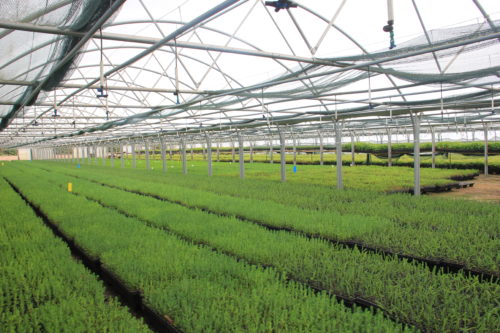The Tree Production Innovation Fund (TPIF) was launched by the Forestry Commission to support cutting-edge projects to assist in enhancing the ‘quantity, quality, and diversity’ of tree planting stock in England.
Through the TPIF, over £1million has been made available for projects to develop new technologies and ways of working to overcome barriers to tree production, whilst addressing one or more of the following three challenges:
- How can we make better use of available seed and vegetative planting material to maximise the quantity, quality and diversity of trees produced?
- How can we develop growing systems to enhance their efficiency and resilience to change, whilst delivering improved quality and diversity of product?
- How can innovative, environmentally-sustainable, weed control solutions be used to reduce reliance on herbicides?
Using Artificial Intelligence to Develop Software to Improve Productivity
In forestry, seeds derived from superior genetic stock are used to produce stock ‘hedges’, which form the ‘backbone’ of traditional vegetative propagation by cuttings.
But this process from single seed to hundreds of cuttings often takes several years for the genetic gains to be realised in the field. This problem is then compounded, as these seeds are often produced through manual cross-pollination and are therefore in very limited supply.
Somatic embryogenesis is an advanced vegetative propagation technology where clonal embryos are multiplied and germinated under laboratory conditions. This is a complex process with several inter-dependant stages, but it can provide a rapid and efficient means of producing thousands of plants from each seed.
The main benefits of somatic embryogenesis are a better conversion rate and quicker turnaround time from seeds to plants than the traditional vegetative route.
As a result, somatic embryogenesis can be used to rapidly diversify planting stock in response to changing market or environmental conditions, for instance, by bulking up new species or hybrids that are disease resistant or drought resilient.
However, somatic embryogenesis is a labour-intensive process, which is currently a severe bottleneck to mass production. Yet the nature of the process also means that it is well-suited to scaling-up to an automated facility, which would increase production capacity and reduce costs. Image analysis software is key to successful automation.
The Project Overview and Aims
The joint project with Forest Research entitled, ‘Using Artificial Intelligence (AI) in developing image analysis software for improved productivity in advanced somatic embryogenesis systems’, aims to develop software to extract information or so-called ‘metrics’ from digital images of plant material, then harness the power of machine-learning to determine their quality.
This involves generating a training data set with RGB images of callus, embryos, and plants, which allows the software to link traits such as colour, shape, and texture to plant quality.
Possible Outcomes for the Future
In the future, this software could provide a non-invasive and real-time means for a ‘go’ or ‘no go’ decision at each production stage, which in turn, could underpin automation.
For laboratory technicians, automation of the process not only reduces injury risks associated with repetitive tasks but also offers rewarding opportunities for upskilling jobs, which is critical for this digital generation.
For the forestry sector, automation will promote diversity of planting stock and contribute to meeting the planting targets in England and elsewhere.
 https://www.maelor.co.uk/wp-content/uploads/2022/11/IMG_7721-500x333.jpg
https://www.maelor.co.uk/wp-content/uploads/2022/11/IMG_7721-500x333.jpg








